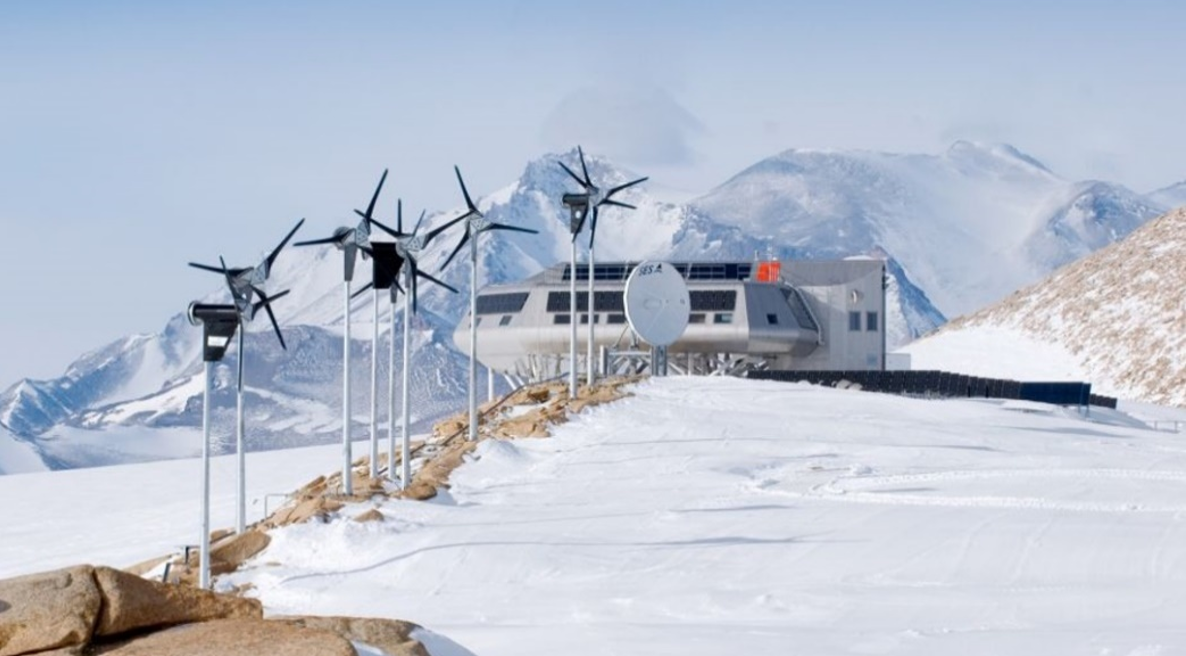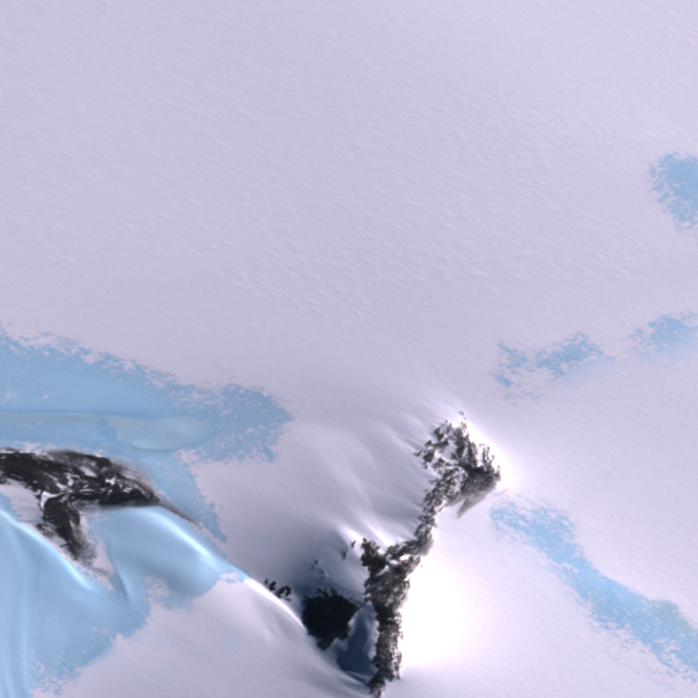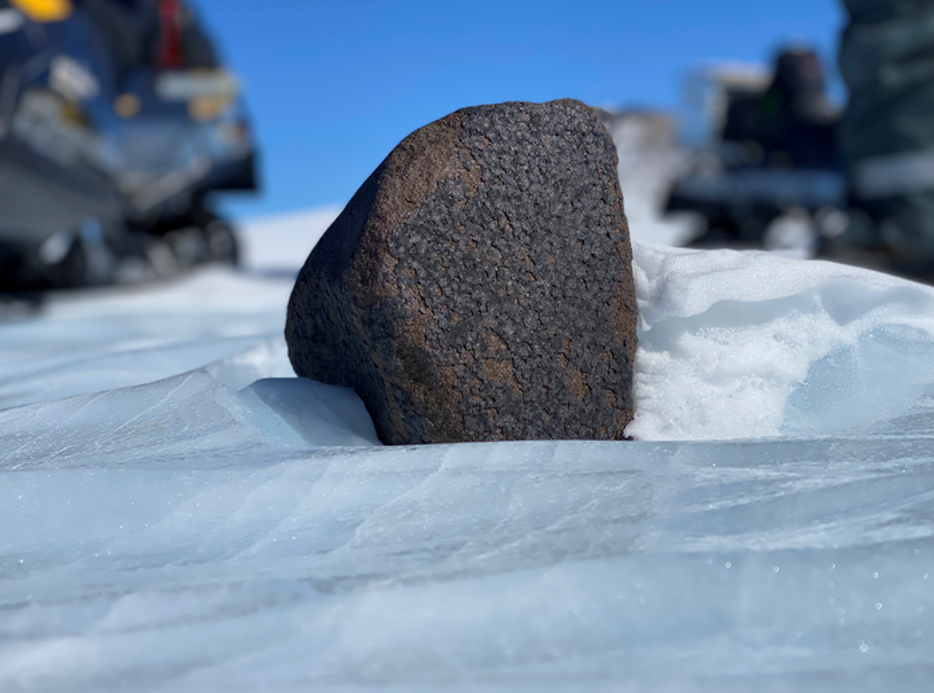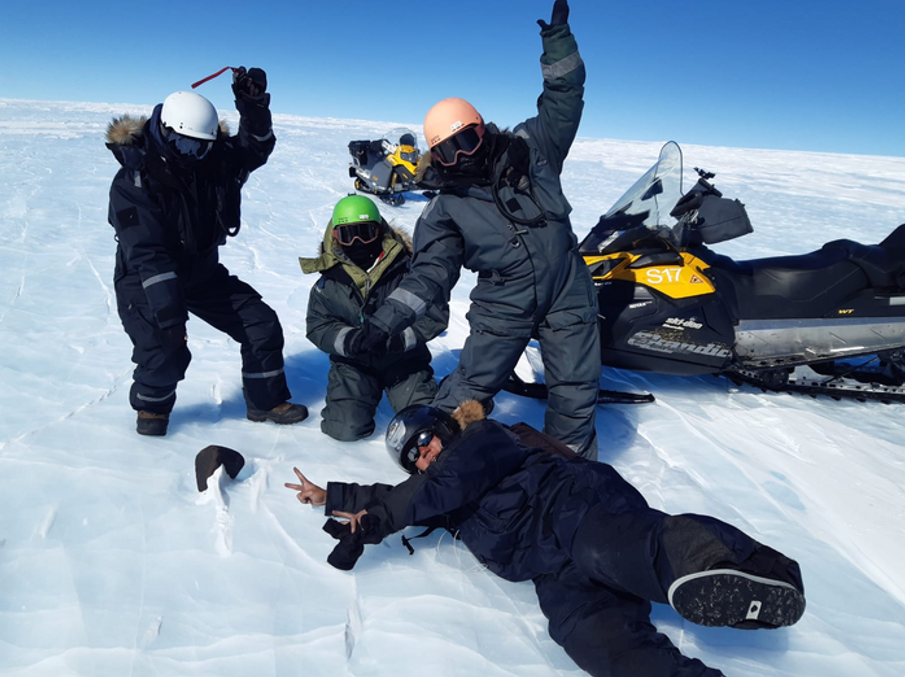A Belgium-led science team based in Antarctica used Copernicus Sentinel-2 data to plan an expedition that recovered one of the biggest meteorites ever found in Earth’s southernmost continent.
The space rock – which was one of a haul of five meteorites collected – is now undergoing analysis at the Royal Belgian Institute of Natural Sciences after being transported to Europe.
A Belgium-led science team based in Antarctica used Copernicus Sentinel-2 data to plan an expedition that recovered one of the biggest meteorites ever found in Earth’s southernmost continent.
The space rock – which was one of a haul of five meteorites collected – is now undergoing analysis at the Royal Belgian Institute of Natural Sciences after being transported to Europe.
Every Austral summer, research groups travel to the Belgian Princess Elisabeth Antarctica (PEA) station – located in the Sør Rondane mountains in the east of the continent – to take advantage of its unique environment and facilities for a range of activities, including meteorite hunting.
The Princess Elizabeth Antarctica
This year science and exploration projects are receiving a boost from ESA through a new Copernicus Sentinel-2 campaign, in which acquisitions over the base have been temporarily increased to provide improved coverage of the largely uncharted region.
Antarctica is one of the best places in the world to search for space rocks.
The continent’s dry environment limits the degree of weathering meteorites undergo and, in addition, they are normally easy to spot against the icy, bright white back drop.
Areas known as blue ice fields are hotspots for the discovery of celestial rocks, thanks to the churning motion of ice flow that is known to re-expose meteorites that are often thousands of years old.
In December, a team of geologists – including scientists from institutes in Belgium, Switzerland and the US – travelled to PEA to search for new icefields in the station’s surroundings well suited to the accumulation of space rocks.
Vinciane Debaile, expedition lead and researcher at the Université libre de Bruxelles (ULB), said: “Having access to Copernicus Sentinel-2 images has been essential to target the best areas and achieve our goal of discovering new possible accumulations of meteorites.”
Copernicus Sentinel-2 captures blue icefields in Antarctica
Imagery of the largely unexplored region delivered by the mission also enabled the team to confirm that the icy target zone was not covered by snowfall, which would render the search impossible.
After completing preparations, the team set off on a three-hour snowmobile expedition to reach the target site.
During the trip – in which the researchers braved biting winds and sub-zero temperatures – the team discovered five meteorites strewn across the ice, one of which weighed 7.6 kg.
Of the 45 000 meteorites recovered from Antarctica in the past century, it is estimated that only about 100 have weighed the same or more as the 7.6 kg rock, making it one of the heaviest celestial specimens ever found in the continent.
After being returned to Europe, advanced analysis of the five meteorites is expected to help scientists investigate the Solar System and the processes within it.
The research team was led by Vinciane Debaille of ULB, and included Schönbächler of ETH-Zurich, Ryoga Maeda of the Vrije Universiteit Brussel and ULB, and Maria Valdes of the Field Museum and the University of Chicago.
Activities at PEA are overseen by the International Polar Foundation, on behalf of the Belgian Polar Secretariat.




